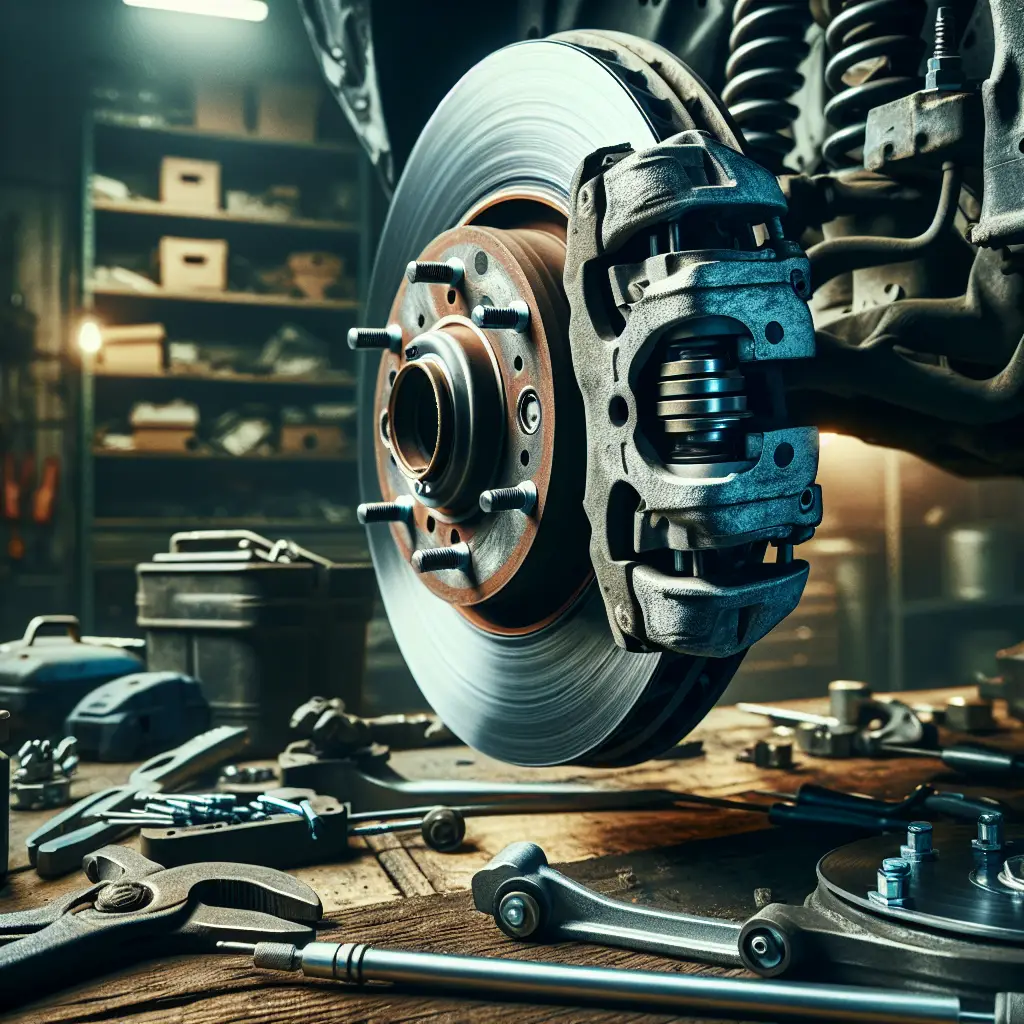Should Brake Pads Be Touching the Rotor? Uncovering the Mysteries of Your Vehicle’s Braking System
When it comes to maintaining your vehicle, understanding the intricacies of its braking system is crucial for ensuring safety and optimal performance. A common question that stirs debate among drivers and technicians alike is: Should brake pads be touching the rotor? In this post, we’ll delve into the mechanics of your car’s braking components to give you a comprehensive understanding of how they should interact.
The Role of Brake Pads and Rotors: A Brief Overview
Before we tackle the main question, let’s quickly revisit the function of brake pads and rotors within the braking system. Brake pads are the components that apply pressure and friction to the rotors (also known as brake discs), which are attached to the wheel. When you press the brake pedal, the pads clamp onto the rotors, slowing down the wheel and, consequently, the vehicle.
The Ideal Relationship Between Brake Pads and Rotors
Now, does this mean that the brake pads should always be in physical contact with the rotors? The answer is a bit nuanced. Typically, when the vehicle is in motion and the brakes are not engaged, there is a very minimal gap between the pads and the rotors—a space that’s often smaller than the thickness of a human hair. This is necessary to prevent unnecessary wear and to ensure that the pads can engage the rotors effectively when you hit the brakes.
However, it’s not accurate to think of this relationship as ‘touching’ in the traditional sense. The constant contact would lead to excess friction, overheating, and wear on both the pads and the rotors. When the car is at a stop and the brakes are not applied, the pads should retract slightly, creating a small clearance to prevent dragging.
Signs of Improper Contact and Potential Issues
If your brake pads are in constant contact with the rotors, you might notice several symptoms indicating a problem:
- Reduced fuel efficiency due to increased drag
- A spongy or soft brake pedal feel
- Unusual noises, such as grinding or squeaking, during braking
- Vibration or pulsation in the brake pedal or steering wheel
These issues can be caused by various factors, including stuck calipers, worn brake components, or improper installation. For a more technical read on the potential causes of these problems, a study by the National Highway Traffic Safety Administration provides valuable insights.
Maintenance Tips to Ensure Optimal Brake Function
Maintaining the correct spacing between brake pads and rotors is vital. Here are some tips to keep your brakes functioning correctly:
- Regular Inspections: Have your brakes checked regularly by a professional. Visually examining the thickness of your brake pads can be an indicator of when they need replacement.
- Prompt Repairs: Address any braking issues as soon as they arise. Ignoring problems can lead to more severe damage and higher repair costs.
- Quality Parts: When replacing parts of your braking system, opt for high-quality components. Consult resources like Consumer Reports for recommendations on the best parts for your specific vehicle.
- Proper Installation: Ensure that any service on your brakes is performed by qualified mechanics who understand the importance of proper pad and rotor alignment.
DIY Troubleshooting: A Word of Caution
While some car enthusiasts are comfortable performing brake maintenance at home, it’s essential to have a good understanding of the braking system before attempting any repairs. Inaccurate adjustments can compromise vehicle safety. Websites such as Car and Driver provide helpful DIY guides, but when in doubt, always seek out a professional.
Understanding When to Seek Professional Help
If you’re experiencing persistent brake issues or are unsure about your vehicle’s braking system’s condition, it’s advisable to seek professional assistance. A certified mechanic can perform a thorough examination and identify any problems that may not be visible to the untrained eye.
Final Thoughts: The Balance Between Safety and Performance
To sum up, brake pads should not be pressed against the rotors when the brakes are not applied, but an incredibly small gap does exist to allow for immediate response when the need arises. Striking the right balance between pad-rotor clearance is crucial for both driving safety and the longevity of your vehicle’s brake system.
As car owners, it’s our responsibility to stay informed about our vehicles’ operations. By understanding the mechanics behind the brake pads and rotors, we can more readily detect issues and take the appropriate steps towards resolution. Always prioritize the health of your braking system—it’s a direct contributor to your safety on the road.
In conclusion, regular brake maintenance and understanding the appropriate pad-to-rotor relationship are key. Should you encounter any brake-related concerns, addressing them promptly will keep your vehicle running smoothly and keep you safe on your journeys. Remember, brakes are a paramount feature of your vehicle, and their care should never be taken lightly.
Is your braking system due for a check-up? Don’t hesitate to schedule a service appointment and ensure that your vehicle remains a reliable and safe mode of transportation.

